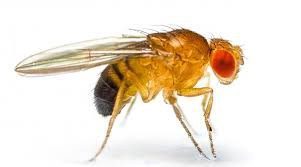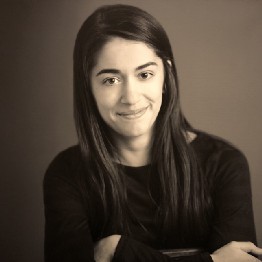Cellular agriculture has to do with creating animal products without the animal. When it comes to creating meat products, this requires us to be able to turn individual cells into fully formed muscle tissue without using the biological capabilities of an animal. We more or less have to start with what an animal starts with and end up with what an animal ends up with but create our own “machine” capable of fulfilling all the same processes in between. This is what cellular agriculture is all about — finding an alternative way to replicate the biological processes fundamental to the generation of animal products.
Which begs the question, what are these biological processes that we need to replicate?
Well, as animals grow and develop, their bodies create cells and these cells specialize to perform specific functions (pump blood, transmit neuronal signals, contract…). But, these cells don’t just pop out of nowhere. Muscle cells in particular can be traced back to a process called myogenesis.
Myogenesis is the process in which our mesodermal cells become muscle tissue. This process naturally occurs in vivo (within our bodies) but it can also be replicated in vitro (in a machine) to create cellular agriculture products.

For now, we’re going to be taking a look at how we can replicate Insect Myogenesis — specifically that of Drosophila (the fruit fly) in order to apply it to entomoculture (the culturing of insect tissue).
Drosophila Myogenesis
Step 1: Creating the Mesoderm
It all starts with an insect’s embryonic stem cells — totipotent cells which have the potential to become all of the kinds of specialized cells that an insect eventually has.
Embryonic stem cells with high levels of dorsal protein are activated by zygotic genes. These genes code for the transcription factors Twist and Snail (proteins involved in mesodermal tissue formation).
The dorsal protein is passed down to a fly embryo from it’s mother and encourages cells to divide, morph and migrate to form a monolayer (a layer just a single cell thick) over the ectoderm. The ectoderm is one of the 3 embryonic germ layers, and as these stem cells fold over a ventral furrow, they create another such germ layer called the mesoderm. Our cells are now called mesodermal cells.
Step 2: Cell Signaling
It is thought that due to the literal proximity of the ectoderm and these mesodermal cells, cell cross talk between the two layers influences the fates of mesodermal cells. For instance, ectodermal signaling molecules called Wingless and Decapentaplegic induce patterning in mesodermal cells and influence whether or not they give way to cardiac or somatic lineage.
And of course, autonomous signalling (signalling within mesodermal cells) also plays a role in determining cell fates. Segmentation gene products (proteins generated by genes responsible for these patterning trends) called Sloppy-paired and Even Skipped create “zones” of mesodermal cells with high and low expression of the Twist transcription factor. Zones with low Twist and high Even Skipped eventually give rise to cells with cardiac and vascular lineage and cells with high Twist and high Sloppy Paired eventually give rise to cells with somatic muscle.
Step 3: Mesodermal Division
These eventual somatic muscle zones are called equivalence groups because they have similar potential. Notch Signalling will act on these equivalence groups and encourage the mesodermal cells to divide. One of the resulting daughter cells will become a myogenic progenitor and the other will become a fusion-competent myoblast.
Step 4: Myogenic Progenitor Division
Then, these myogenic progenitors divide asymmetrically in one of two ways.
- Case 1: 2 daughter cells are founder cells. Founder cells are essentially the seeds for future muscle which other cells bind to in order to create tissue. Both of these cells have a low expression of Twist.
- Case 2: one daughter cell is a founder cell (with low Twist), and the other is an adult muscle precursor (with high Twist). The adult muscle precursors stay quiescent — they don’t really do anything — until the fly becomes a larva.
The reason adult muscle precursors (AMPs) stay quiescent while the founder cells do not is because of something called Numb Signalling. Notch Signalling combined with Twist expression work together to discourage cell differentiation. Numb is a protein which inhibits Notch and is overwhelmingly sent to the founder cells over the AMPs. This results in the founder cells differentiating sooner while that ability is repressed in AMPs.
Step 5: Fusion
Now, about 4–25 of the previous fusion-competent myoblast will fuse with one founder cell to create embryonic muscle. This adhesion is facilitated through the proteins Dumbfounded (in the case of founder cells) and Sticks and Stones (in the case of fusion competent myoblasts). Dumbfounded attracts sticks and stones to encourage short migration of the fusion competent cells.
As these individual cells fuse, they form multinucleated myofibers which is the finished embryonic muscle.
Now, in an actual insect, all of this larval muscle is then destroyed during metamorphoses and a similar process takes place in order to create the adult muscle. This is where the quiescent adult precursor cells come in, and they use the old larval muscle as a sort of mold around which to grow.
But, this part is not of so much concern to us in cellular agriculture, because we can stop the process before metamorphoses and just be left with the muscle.
How this applies to Entomoculture
So now we have to replicate this entire process in order to create insect tissue. The helpful thing is that most of the important points in the process (cell signaling and differentiation) were initiated from with in the cell. The only thing we really have to do is feed them so they have the nutrients to be able to carry out those natural abilities.
- Mesodermal cells with high expression of Twist and Sloppy Paired are extracted from the animals. We focus on cells with these specific transcription factors, because as we saw above, they are linked to creating muscle tissue. In the case of a primary culture, the cells are taken directly from the animal. In the case of secondary cultures, cells might be cryopreserved (frozen) from previous experiments.
- Stem cells are immersed in a culture medium and proliferate. A culture medium is made out of a basal media combined with additives to contain everything cells need to grow like carbohydrates, fats, animo acids, salts, vitamins and growth factors. As these molecules are consumed by the cells, they can carry out their cellular processes. This is how we power myogenesis.
- Stem cells are put into a bioreactor and differentiate. Bioreactors are machines which provide the environmental conditions (temperature, pH, gas levels…) necessary for myogenesis.
- Structured meat products are put on a scaffold. Structured meat products are characterized not only by the kinds of cells present, but their overall arrangement as well. A scaffold is a mold which the cells grow in and around to form the specific shape and structure of the meat.
And that’s how our cellular agriculture machine replicates our biological process in order to create cultured meat!


